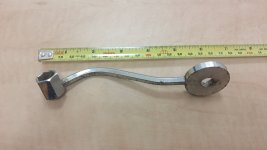Cryptography
Banned
- Jan 20, 2015
- 432
- 112
- Primary Interest:
- All Treasure Hunting
And I might add, if we were drawing three cards from a hat and the order in which they were drawn held no relevance then your odds of chance would be closely correct. However, when we factor in the multiples of possible orders to those odds, as those possible variables are relevant to the presented task, then I believe you will find those odds against success on the first attempt to be much-much higher. Because the correct order is relevant then those odds would have to become factoring variables and thus multiplied by all of the possible combinations.
Wow. ( A set of three papers (labeled 1,2,3) can be shuffled randomly and will have only 6 possible resulting combinations. (1,2,3 - 1,3,2,- 2,1,3 - 2,3,1, - 3,1,2 - 3,2,1 )
So if the pamphleteer were to select and label the three (previously unlabeled) ciphers completely at random he would still have a 1/6 (or 16.6%) chance of matching the original author's selection. But - we don't know for certain he did. We can't know for certain until someone positively breaks at least one more of the codes.In fact, the only thing we know for certain is that both men labeled #2 as "2" and there are two possible combinations that contain that. This means that the pamphleteer has a 2/6 chance based upon the evidence that we currently have. That's a 1/3 probability purely by random chance!)
MPL has this one in the bag BS!
BS you sound like my X wives, sorry your marage to the bale papers ended in divorce but
 give it a rest.
give it a rest.







